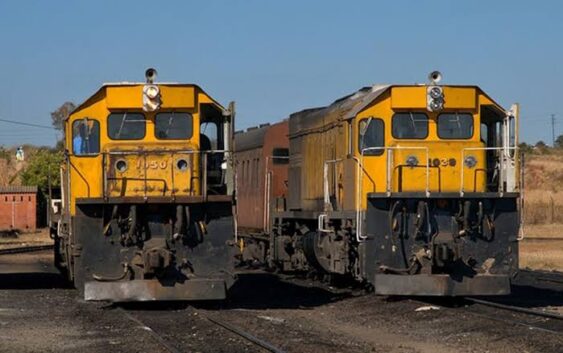- HOW TEMANE-MAPUTO ELECTRICITY TRANSMISSION LINE PROJECT IS GOING THROUGH TEST IN MOZAMBIQUE
- NAMIBIA INAUGURATED FIRST PLASTIC RECYCLING PLANTS
- PROGRESS MADE ON PIIM PROJECTS AS OVER 85% COMPLETED IN ANGOLA
- WORLD BANK KICK-OFF INSPECTION OF USMID PROGRAM IN UGANDA
- ALGERIA MINISTER RECIEVED HARBOR ENERGY CEO OVER ENERGY PARTNERSHIP
CHINESE SET TO CONSTRUCT NEW CARGO RAILWAY LINE IN ZIMBABWE

TSINGSHAN Holdings, which has already poured US$2 billion in investments locally and is currently building the US$1 billion steel plant at Manhidze, near Chivhu, is set to construct a new cargo railway system.
The new line, which is meant to ferry products between Tsingshan’s three subsidiaries in Hwange, Chegutu, and Chivhu, and the port of Beira, will be constructed alongside the rehabilitation of the National Railways of Zimbabwe’s (NRZ) old line.
The Chinese-owned firm, with interests in coal (Dinson Colliery), steel, and chrome (Afrochine Smelting), is yet to announce timelines on its new project that could ease pressure on Zimbabwe’s poor cargo network.
Project Manager, Wilfred Motsi, said although a feasibility study was yet to ascertain the exact amount to be injected, initial research indicated it could run into billions.
“We recently signed a memorandum of understanding (MoU) with the Zimbabwe government to undertake refurbishment and construction of a 1,000km long railway line system meant to provide a dedicated, reliable, uninterrupted, and efficient railway line to ferry our products for both local and export-imports routes,” said Motsi.
“We want to rehabilitate the existing railway line, linking our steel plant and Mvuma. As you know carbon steel is a bulk commodity, so the most viable means of transport is rail.
“We are prepared to construct a 50km railway line from Mvuma to the site. We are also thinking of constructing a dedicated railway line from Hwange via Chegutu to our mine in Chivhu then Beira.”
He added; “We are already in discussions with the NRZ in coming up with the best model of a railway line. The dedicated one will be determined by the capacity to carry more weight and more goods.
“We will be coming in with locomotives and wagons. We are still working on the feasibility studies, but indications are that this will run into billions.”
Poor administration and funding have seen the NRZ struggling to maintain its locomotive and wagon fleets while failing to rehabilitate its network, most of which was built before independence in 1980.
NRZ’s revival has also been affected by the country’s poor economy and failed efforts in 2017 to get an investor for it after the government realized it could not sort out its 4 225km network.
Tsingshan’s Manhidze project is arguably the largest single foreign investment since President Emmerson Mnangagwa took over from his late, deposed predecessor, Robert Mugabe.

